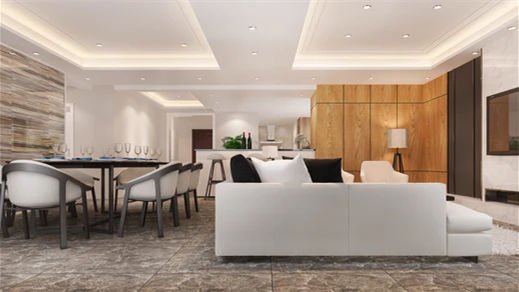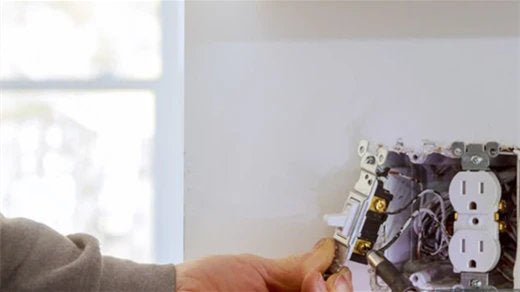Recessed lighting is a popular choice for illuminating residential and commercial spaces. These fixtures are installed into the ceiling, providing a sleek and modern look while offering ample illumination. Determining the right number of recessed lights for a room involves various factors, we will delve into the intricacies of calculating the appropriate number of recessed lights for your room, ensuring optimal lighting performance and aesthetics.
Understanding Recessed Lighting
Before delving into the specifics of determining the number of recessed lights for your room, it's essential to understand the components of recessed lighting and how they contribute to overall illumination.
- Housing: The housing refers to the fixture that contains the lamp holder and electrical components. It is installed above the ceiling and determines the type of bulb and trim that can be used.
- Trim: The trim is the visible part of the recessed light that sits flush with the ceiling. It comes in various styles, including baffle, reflector, and adjustable, each offering different lighting effects and aesthetics.
- Bulb: Recessed lights accommodate different types of bulbs, such as incandescent, LED, and CFL. The choice of bulb impacts factors like energy efficiency, color temperature, and lifespan.
Factors to Consider When Calculating Recessed Lighting
- Room Size: The size of the room is a crucial factor in determining the number of recessed lights needed. Larger rooms generally require more fixtures to ensure uniform illumination across the space.
- Ceiling Height: Ceiling height affects the spread and intensity of light. Higher ceilings may necessitate more powerful fixtures or additional lights to compensate for the increased distance between the fixtures and the floor.
- Lighting Goals: Consider the intended use of the room and your lighting preferences. Task-oriented spaces like kitchens and home offices may require brighter lighting, while living rooms and bedrooms may benefit from softer, ambient lighting.
- Lighting Layout: The layout of furniture and architectural features in the room can impact the placement and spacing of recessed lights. Avoid placing fixtures directly above obstacles like tables or seating areas.
- Light Spacing: Proper spacing between recessed lights ensures even illumination without creating dark spots or glare. Factors such as beam angle and light output influence the spacing requirements.

Calculating the Number of Recessed Lights
To determine the appropriate number of recessed lights for your room, follow these steps:
- Measure the Room: Begin by measuring the length and width of the room using a tape measure. Record these dimensions in feet. For irregularly shaped rooms, break them down into smaller, more manageable sections and measure each individually.
- Calculate Room Area: Multiply the length by the width to determine the room's square footage. For example, if the room measures 12 feet by 15 feet, the total square footage would be 180 square feet.
- Determine Lighting Intensity: Consider the room's function and your lighting preferences to determine the desired level of illumination. This is typically measured in footcandles, which represent the amount of light falling on a surface. Different activities may require different levels of illumination. For example, a kitchen or workspace may require higher footcandle levels for tasks, while a bedroom or living room may benefit from softer, ambient lighting.
- Calculate Total Lumens Needed: Once you've determined the desired footcandle level, you can calculate the total lumens needed to achieve it in the room. This can be done using the following formula:
Total Lumens = Room Area (in square feet) × Desired Footcandles
For example, if you want to achieve 30 footcandles in a 180 square foot room
Total Lumens = 180 sq. ft. × 30 footcandles = 5400 lumens
- Select Fixture Wattage: Choose the appropriate wattage for your recessed light fixtures based on the type of bulb (e.g., LED, incandescent) and its light output. LED bulbs are energy-efficient and typically require fewer watts to produce the same amount of light as incandescent bulbs.
- Determine Fixture Lumens: Refer to the manufacturer's specifications or packaging to determine the lumens produced by each recessed light fixture at the chosen wattage. This information is typically provided by the manufacturer and can vary depending on the specific model of the fixture.
- Calculate Number of Fixtures Needed: Divide the total lumens needed for the room by the lumens produced by each recessed light fixture to determine the number of fixtures required. Round up to the nearest whole number to ensure sufficient lighting coverage.
Number of Fixtures = Total Lumens ÷ Fixture Lumens
For example, if each recessed light fixture produces 800 lumens:
Number of Fixtures = 5400 lumens ÷ 800 lumens = 6.75
Since you can't install a fraction of a fixture, you would round up to 7 fixtures.
- Adjust for Spacing: Consider the spacing between recessed lights to ensure even illumination without creating dark spots or glare. Factors such as beam angle and light output influence the spacing requirements. As a general rule of thumb, aim for spacing between fixtures that is approximately half the distance of the fixture's spacing to the nearest wall. Adjust the number of fixtures as needed to achieve uniform lighting distribution.
Conclusion
Properly calculating the number of recessed lights for your room is essential for achieving optimal illumination and ambiance. By considering factors such as room size, ceiling height, lighting goals, and spacing requirements, you can ensure that your lighting design meets your needs and enhances the overall aesthetic of your space. Whether you're illuminating a kitchen, living room, bedroom, or office, thoughtful planning and calculation will result in a well-lit and visually appealing environment.


































Leave a comment
This site is protected by hCaptcha and the hCaptcha Privacy Policy and Terms of Service apply.